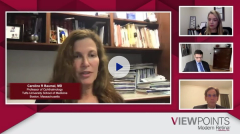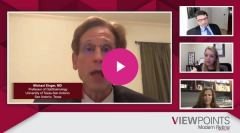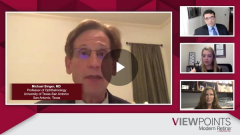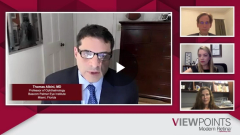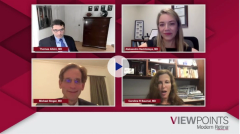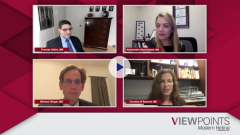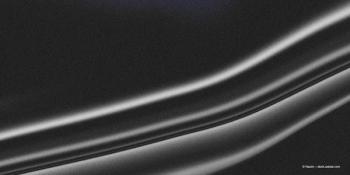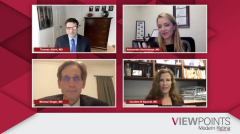
Anti-VEGF agents for treatment of wet AMD
Episodes in this series

Caroline Baumal, MD: We have some FDA approved anti-VEGF agents and some off-label agents. Dr Albini, do you want to go through the anti-VEGFs that we have and tell us how you decide what you are going to use?
Thomas Albini, MD: You are going to make me choose sides here?
Caroline Baumal, MD: No…we are very fortunate that we all have access to everything. We are in places where we treat a lot of patients, and that is not always the case for everyone. In brief, tell us how the mechanisms differ between the agents.
Thomas Albini, MD: There are a lot of similarities between the options that we have, both FDA approved, and non-FDA approved. They are all basically products based on antibody technology that target vascular endothelial growth factor [VEGF]. It is apparent and incredible how targeting this one molecular pathway really helps patients with wet age-related macular degeneration [wet AMD] as well as other forms of pathophysiology, like diabetic macular edema and other forms of macular edema.
In any event, the first FDA-approved agent was pegaptanib, which was a lot better than the standard of care at the time, but it is not used anymore because the subsequent agents do a much better job of restoring vision in patients. Then the most used agent is bevacizumab, which is used off-label and aliquoted from larger doses that are used for metastatic cancer. That allows this agent to wind up being less in cost than the other FDA-approved agents, which is an important factor for patients with high deductibles or co-pays. Around the world, it is by far the most commonly used agent because of the cost issue.
Ranibizumab is very similar; it is a slightly smaller molecule and was shown to have very similar visual acuity outcomes in a prospective randomized NEI-[National Eye Institute]-sponsored trial, the CATT trial. It showed that, whether this drug is given on a monthly basis or given on an PRN [pro re nata, or as needed] basis, the visual acuity outcomes are within 3 letters or so, regardless of the strategy or the drug that is used.
Aflibercept was then shown to be noninferior to ranibizumab in the pivotal VIEW trials. This drug has a much higher binding affinity and can be used at a lower or less frequent dosing interval. I think this is now the most commonly FDA-approved drug used in the United States for wet macular degeneration. People feel that it has a better drying potential, and again, that doctors can extend patients further out on this drug and have fewer injections relative to other drugs.
Then we have the recent addition of brolucizumab, which we have all been very excited about. This is an antibody fragment that is the smallest molecule of all these drugs, which allows them to pack in more molar equivalent, a higher number of molecules into each injection. This extends the half-life of the drug and should reduce the dosing frequency even further. In fact, half of patients in the pivotal HAWK and HARRIER trials were able to be extended out to 3 months with this drug.
However, there has been a rate of intraocular inflammation 4 times higher than that seen with aflibercept, including a small subpopulation of patients who have had severe vision loss associated with intraocular inflammation, particularly occlusive retinal vasculitis. Between that high rate and COVID-19 [coronavirus disease 2019], the widespread adoption of this drug has stalled for a year now that it has been out on the market. We will all see how that progresses. Later, we will be talking about future options, but hopefully we will have more to the armamentarium.
Caroline Baumal, MD: Dr Rachitskaya, we have a host of anti-VEGF agents available for use. What sort of strategy do you use when deciding which agent to use?
Aleksandra Rachitskaya, MD: We have several agents to choose from, and all these agents work very well. There are specific patient characteristics that guide me. Routinely, I start with Avastin. It is very easy to get, there are no issues with insurance. We [at Cole Eye Center] have it aliquoted at our pharmacy, so it is reliable. Then I see the response. Whatever you start the patient with, in AMD, we usually see a response rapidly. If the response is suboptimal and they could do better, I consider switching them to another agent. Some patients can be extended a little bit longer on different agents, so I utilize that.
When we look at large trials, all these drugs are similar; the differences are minimal. When we look at trials, it’s EDTRS [Early Treatment Diabetic Retinopathy Study] vision [acuity assessment] versus the clinic vision. All these drugs do well. With brolucizumab, there is some more potent drying. As we develop newer drugs, we have drugs that last longer. In the current armamentarium, they are overall similar, and patients do well on all of them.
Newsletter
Keep your retina practice on the forefront—subscribe for expert analysis and emerging trends in retinal disease management.



